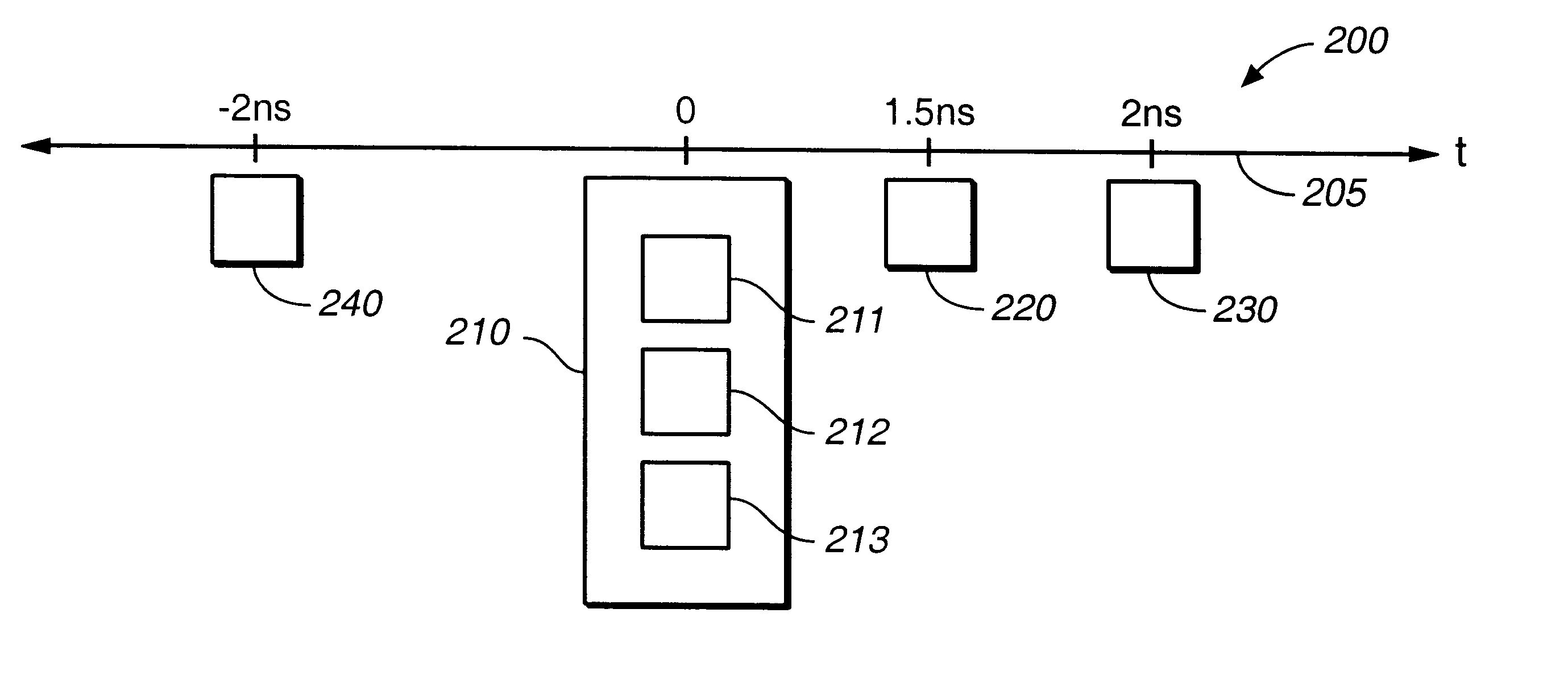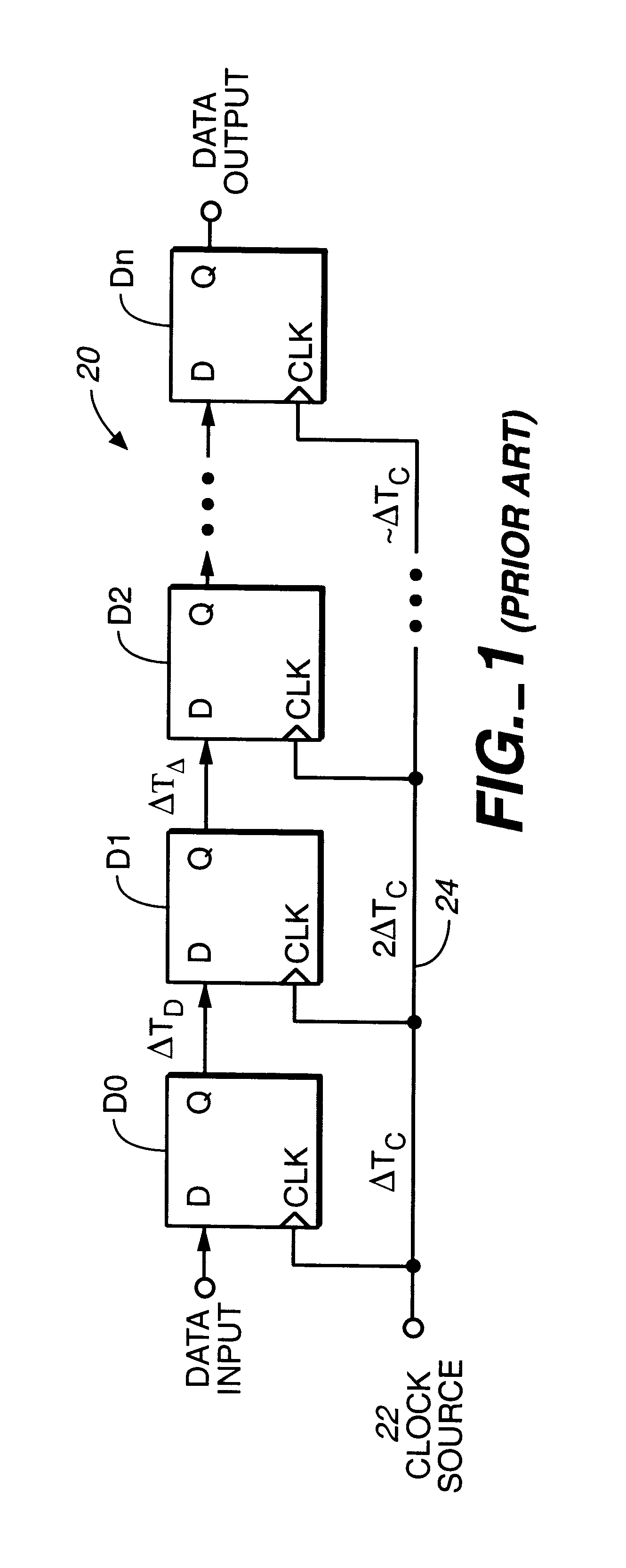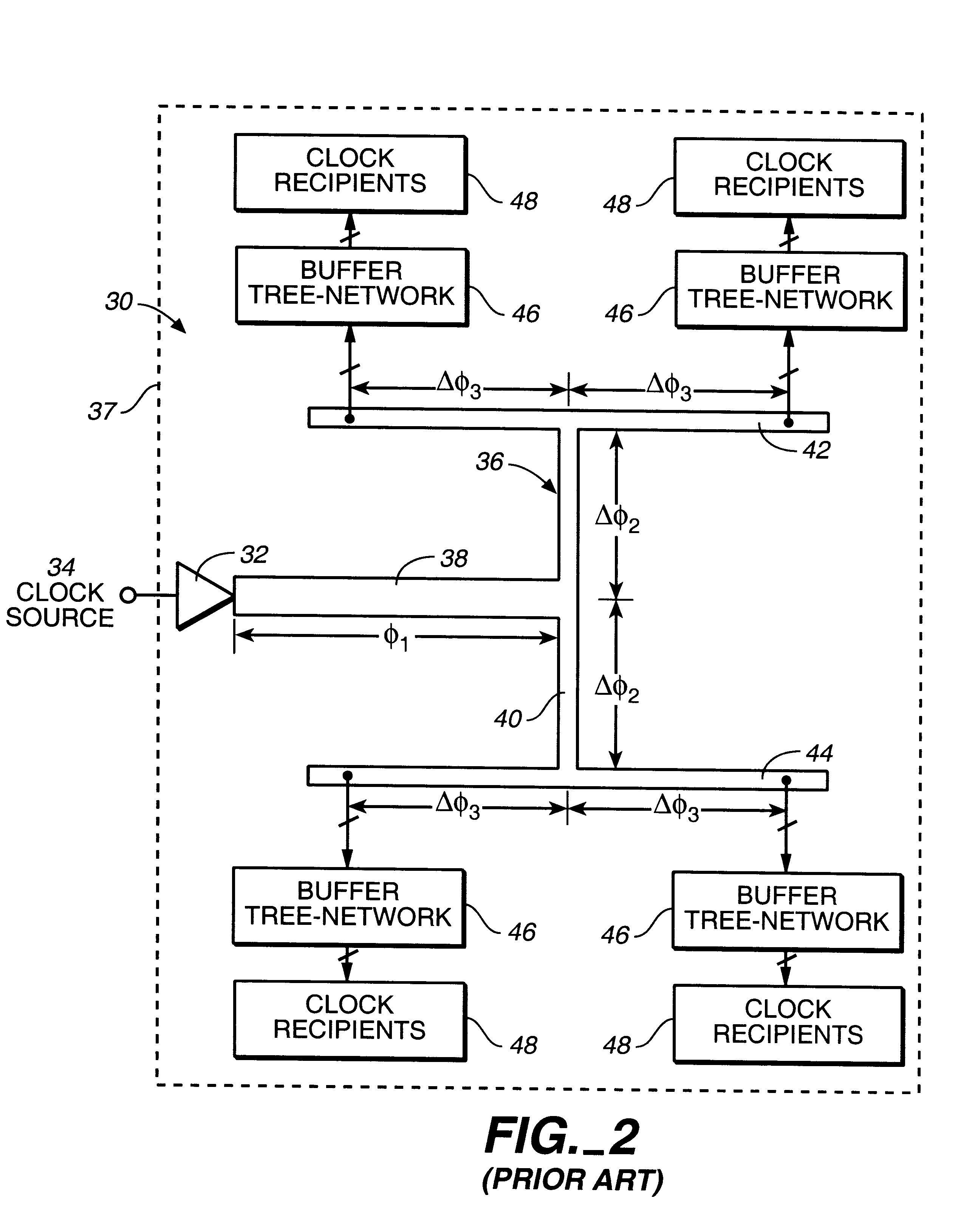Clock distribution network planning and method therefor
a technology of distribution network and clock, applied in the direction of generating/distributing signals, instruments, program control, etc., can solve the problems of data as a whole improperly propagating down the chain, etc., to reduce the adverse effects of clock skew
- Summary
- Abstract
- Description
- Claims
- Application Information
AI Technical Summary
Benefits of technology
Problems solved by technology
Method used
Image
Examples
Embodiment Construction
FIG. 6 illustrates a flow diagram for providing an overview of ASIC chip design according to preferred embodiments of the present invention. It should be understood that the description contained herein are in terms of a suite of software "blocks" that can be run on any suitable computer system.
In step 100, an IC system design specification is prepared. The preparation in step 100 consists of system or device specification and may include functional specifications of subsystem elements, timing specifications and I / O requirements, and power, package and interface requirements. At this initial step of the design cycle, the desired system design is described in the highest level of abstraction.
In step 110, a technology-independent description is produced by formulating a behavioral description of the circuit's desired behavior in a high-level hardware description language (HDL), such as VHDL or Verilog-HDL. Instead of being formulated in a behavioral description, the technology-indepen...
PUM
 Login to View More
Login to View More Abstract
Description
Claims
Application Information
 Login to View More
Login to View More - R&D
- Intellectual Property
- Life Sciences
- Materials
- Tech Scout
- Unparalleled Data Quality
- Higher Quality Content
- 60% Fewer Hallucinations
Browse by: Latest US Patents, China's latest patents, Technical Efficacy Thesaurus, Application Domain, Technology Topic, Popular Technical Reports.
© 2025 PatSnap. All rights reserved.Legal|Privacy policy|Modern Slavery Act Transparency Statement|Sitemap|About US| Contact US: help@patsnap.com



